Missile and artillery battleship of the XXI century
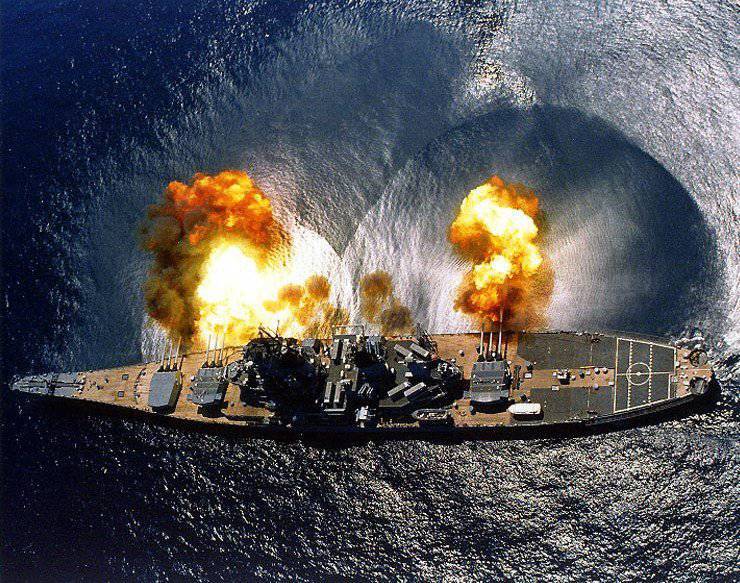
- Lt. Gen. Emil R. Bedard, United States Marine Corps
To begin with - a few facts and statistics.
A third of the world's population lives in a coastal strip 50 km wide. More than half of megacities of the whole world are concentrated on the coast: London, Istanbul, New York, Rio de Janeiro, Shanghai, Tokyo ...
The average range of naval artillery shots during Operation Desert Storm was 35 400 meters (guns of the battleships Missouri and Wisconsin).
The explosion of the 862-kg high-explosive projectile Mk.13 created 15-meter crater 6 meters deep. Vietnamese veterans recall how a blast wave cleared a “spot” in the jungle with a radius of 180 meters suitable for helicopter landing.
At a distance of 20 kilometers, the 1225-kg armor-piercing “suitcase” Mk.8 APС could penetrate half a meter of steel armor or over six meters of reinforced concrete - no fortification could stand up to the power of 406 mm guns.
By analyzing the video recordings, it was established that Iowa-type battleships could have been made an hour before 1000 shots with main caliber. A similar density of fire could create two aircraft carrier wings.
According to the US Navy, the operating costs of the Iowa battleship were 7 times lower than those of the Nimitz aircraft carrier.
- Commander-in-Chief of the United States Navy Admiral Carlisle Trost at the Wisconsin Battleship Reactivation Ceremony, October 1988
- Capten Larry Sequist, commander of the battleship "Iowa" about the events of the Tanker War (mid-80-x).
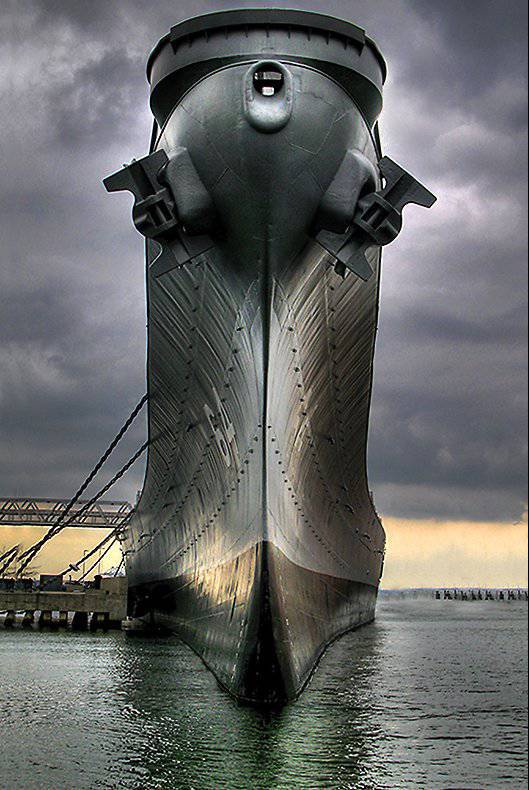
Opinions of outside experts.
- Sultan Qaboos bin Said.
- Appeal by the Sultan of Oman to US Secretary of Defense Richard Cheney, autumn 1991
- An information source in the Syrian army about events in the Bekaa Valley (1983)
US intelligence claims the opposite: 300 shells from the battleship New Jersey silenced eight artillery batteries that bombarded the Christian neighborhoods in the west of Beirut. Positions of the air defense system in the Bekaa Valley were suppressed. One of the shells hit the command post, where at that moment the commander of the Syrian contingent was in Lebanon.
And again - dry statistics.
From the moment of receiving the request to the first shot of the ship artillery, no more than 2,5 minutes should pass - this is the norm of the United States Marine Corps, 1999 year (Emergency Fire Support).
During the NATO aggression against Yugoslavia (1999), difficult weather conditions and poor visibility caused a partial or complete cancellation of 50% of sorties.
- Lieutenant General E. Bedard on critical shortcomings aviation in the performance of tasks related to the direct support of troops.
Немного stories.
Between May 1951 and March 1952, US Navy ships shot at targets on the Korean 414 000 peninsula with artillery ammunition (90% are five-inch shells; the rest are six, eight and sixteen inches). The current conflict between South Korea and the DPRK will require equally intense fire support from the sea.
Between 1965 and 1968 American ships fired more than 1,1 million projectiles along the coast of Vietnam. This is serious.
Battalions ask for fire
By the end of the 20th century, the fleet had completely lost artillery in caliber over 5 inches. The vast majority of modern cruisers and destroyers have no more than one universal 76 caliber artillery installation - 130 mm. The gun is used as an aid for warning shots, shooting at unprotected objects and finishing off "wounded game".
The disappearance of large-caliber artillery did not mean the disappearance of the tasks traditionally solved by the guns of the ships. Yes, in the fight at sea artillery gave way to rocket weapons. But there remained a wide "gap" in solving problems in the "fleet against the shore" format. Suppression of enemy defenses, direct fire support of amphibious assault forces and army units fighting near the coast. Traditional areas of use for big guns.
At first nobody paid attention to this - everyone was passionate about rocket weapons and the idea of a worldwide nuclear “holocaust”. Suffice it to recall the means by which the Yankees were preparing to clear the enemy coast in 60-s - a missile with a nuclear warhead RIM-8B, which was part of the maritime SAM Talos (power warhead - 2 CT). Finally, the geopolitical situation itself did not contribute to the development of the idea of amphibious assault forces - the superpowers had allies in any region of the planet, through whose territory they broke into "visiting" the enemy (Vietnam, Iraq - all according to a single scheme).
But there were exceptions - the Bekaa Valley or the Falkland War of 1982, when the sailors had no choice but to uncover the guns and give a hundred volleys towards the coast. And if the Yankees were lucky in Lebanon - there was a reactivated battleship from the Second World War, then the British had to tight. Of the naval artillery, only 114 mm "farts" remained, poorly suited for shelling the coast. The situation was saved only by the mediocre preparation of the enemy. Get ashore dug into the ground tanks, the results of the “duels” could be disastrous for the destroyers of Her Majesty.
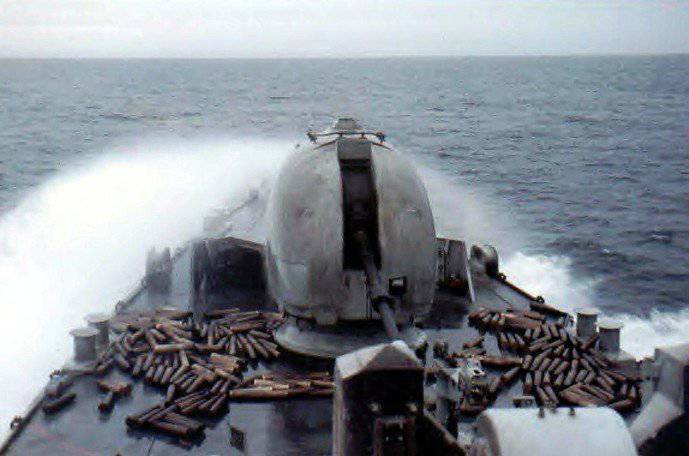
The US Marines were the first to sound the alarm. These guys had everything they needed to land from the sea: squadrons of amphibious assault ships and helicopter carriers, sea transfer terminals MLP, high-speed transports and air-cushion landing boats. Amphibious armored vehicles, special equipment and weapons. Everything you need - except for fire support. The Pentagon offered its fighters "to go breastfeed" on machine guns of an unsuppressed enemy defense.
But how to crush the defense? How to provide fire support forces assault?
Five inch destroyer cannons?
The power of 30-kg shells is enough only to combat unprotected manpower. Trying to destroy with their help long-term fortifications, prepared positions and infrastructure on the coast of the enemy is a waste of resources and time. The firing range (20-25 km) also does not contribute to the effective use of five-inch guns: a mine threat impedes approaching the shore, and the ship itself becomes vulnerable to enemy fire.
The use of small caliber guns is justified in case of massive shelling and "stripping" of the enemy coast. But modern ships are not even capable of that: just one cannon per destroyer with 600 rounds of ammunition. Neither of which the intensity of the fire can not speak.
The creation of guided munitions also does not solve anything: a five-inch projectile is not capable of penetrating even a meter of reinforced concrete, and its high accuracy means little in comparison with large-caliber ammunition. The radius of the 406-mm projectiles in any case is greater than the circular probable deflection of high-precision ERGM ammunition.
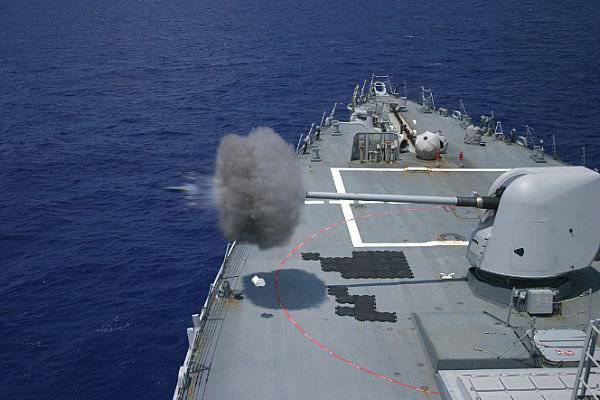
For this reason, in the United States in 2008, work was completed on the creation of long-range projectiles for maritime "five-inch". The Extended Range Guided Munition (ERGM) program envisioned the creation of a guided projectile with an estimated range of 110 km, but the caliber chosen was too small.
Finally, one should not neglect the psychological factor - the tears of large-caliber shells can sow panic and lead to a mass exodus of enemy soldiers from the occupied territory. What has already been proven in practice.
Direct air support?
“All-weather aviation does not fly in bad weather” (Murphy’s Law). In a snowstorm, fog or a sandstorm, the landing party is guaranteed to remain without fire support. The second important factor is the reaction time: here, only a combat air patrol that continuously hangs over the front edge can compete with guns.
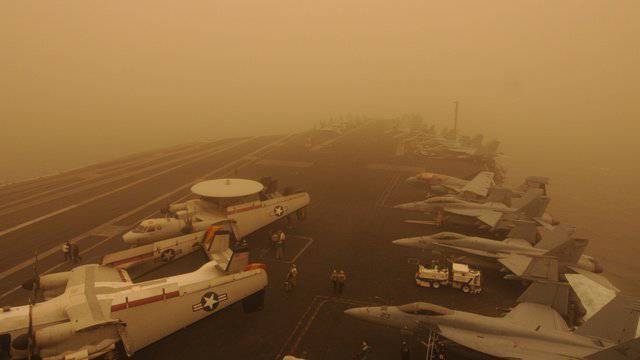
American pilots felt masters of the sky in Yugoslavia and Afghanistan. But what will happen in the event of a war with the DPRK or a landing landing on the territory of Iran?
The Iranians may have the appearance of modern air defense systems. The North Koreans have a huge number of anti-aircraft artillery barrels. This excludes flights at altitudes below 2 thousand meters, which in turn makes it difficult to use unguided weapons, makes it impossible to fly attack helicopters and substitutes aircraft at medium altitudes under the fire of anti-aircraft missiles.
What is a developed air defense system, the Yankees know firsthand. Vietnam has become a terrible warning from the past: according to official data, the losses in that war amounted to 8612 airplanes and helicopters.
American "aerocracy" is powerless against bad weather and anti-aircraft systems C-300. "Tomahawks" are too expensive and few in number. Five-inch guns do not have enough destructive power.
Only big guns can help the landing party.
To our displeasure, the American naval commanders and engineers quickly reacted to the situation and offered several solutions to the problem at once. Among the proposals that were made were the following.
Ship support fire on the basis of amphibious transport "San Antonio" (LPD-17), armed with a pair of 155 mm guns AGS. Relatively cheap and angry option.
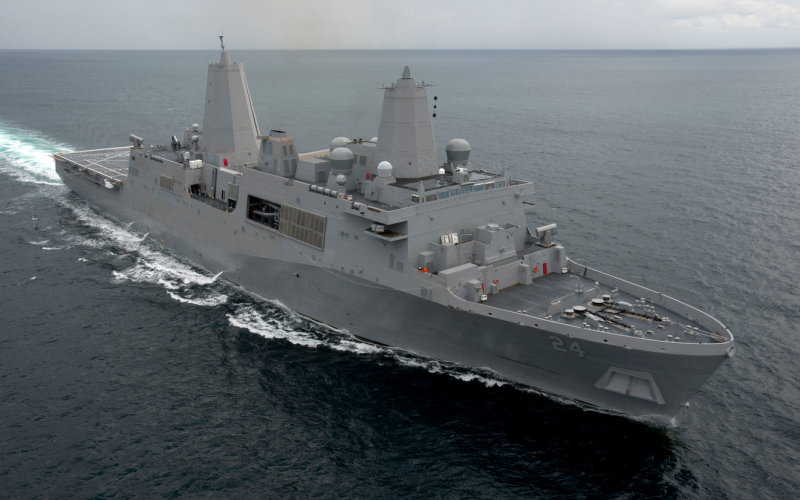
The second sentence is the Zamvolt missile-artillery destroyer. This option subsequently received a start in life. It was planned that the Zamvolta would become the main type of destroyers of the US Navy (at least 30 units), but the exorbitant greed of shipyard managers and the sophisticated design of the ship forced them to change plans to reduce the order. In total, no more than three Zamvolts will be built. Specific shock tool for local wars of the future.
Also among the proposals was a conservative option with the construction of an additional aircraft carrier (which was completely out of topic - the fleet needed guns). And, finally, a provocative initiative to build a rocket-artillery ... battleship.
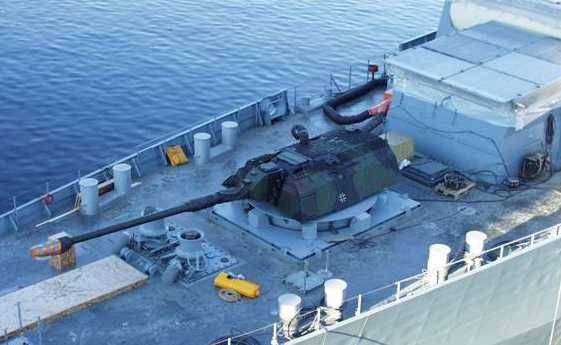
Capital warship (Capital Surface Warship, CSW). Why not?
The estimated appearance of the ship is as follows.
360 launch cells for missiles (under deck UKP Mk.41).
Several artillery towers with guns of a caliber over twelve inches (305 and over mm). Modern shells with increased flight range and laser / GPS guidance (technologies developed under the ERGM program).
Five-inch caliber guns (127 mm) with cellars of increased capacity - for conducting massive shelling of the coast and the destruction of unprotected targets.
Modern radar and fire controls (similar to "Aegis"), integrated ship automation.
All the presented splendor is shackled in decimeter armor and enclosed in a case with a total displacement of 57 000 tons.
The neolinkor concept was proposed by the Department of Defense Forces (Office of Force Transformation, OFT) of the US Department of Defense in 2007.
Despite the seemingly improbability of such a ship, the idea of CSW found broad support among sailors. Neolinkor is a simple and obvious solution for a number of important tasks: fire support (cheap, reliable and effective), demonstration of power in peacetime (it is easy to imagine what kind of ferocious CSW will have). Due to its armament and the highest combat stability, the battleship will be the most important figure in the theater of operations. The invulnerable and immortal warrior, by his presence alone, revealing awe at the enemy and diverting significant resources to attempts to destroy such a ship.
- James O'Brien, Head of the Center for Fire Test and Combat Damage Assessment, US Department of Defense.
But is it possible to combine the traditional elements of the dreadnought era with the technologies of our time? On the technical side, the answer is overwhelmingly positive. The weight and size characteristics of modern weapons and mechanisms have declined radically: at CSW, every electric bulb, generator, or switchboard will be several times lighter than similar devices on the Iowa battleship (1943). The freed up load reserve will not be wasted. The modern battleship will have even more impressive security and enhanced weapons.
What is the main problem in implementing the CSW idea?
Of course, the cash needed to cover the costs of designing and building such an extraordinary ship. But how justified are the skeptics' fears and doubts?
Of course, CSW will not come cheap. Like its ancestors - the battleships and battlecruisers - the capital ship will become an attribute of the fleets of the leading powers. The rest will be quietly jealous aside, avoiding situations where this force can turn against them.
Neolinkor is much smaller than the supercarrier (57 thousand against 100 thousand tons) and, therefore, cannot be more expensive than an atomic giant with a superradar, electromagnetic catapults and a plasma system for garbage disposal. The cost of the aircraft carrier Gerald Ford, without taking into account the cost of its wing, exceeds 13 billion. However, the colossal figure does not bother the military - Fords are planning to build a series of 10-11 units at a rate of one ship in 4-5 years.
Supporters of the CSW project estimated that the development and construction of a neolinkor would cost an amount close to 10 billion. At the same time:
While we should not forget that the battleship will carry as many weapons as ten "Ticonderog" and "Orly Berkov" together. In addition, it will have the highest military stability and ominous reputation.
One of the prerequisites for the popularity of the project became CSW problems associated with the construction of the destroyer "Zamvolt".
Two six-inch guns firing at a range of 160 km. 80 vertical installations for rocket weapons.
Alas, the remarkable concept of a rocket-artillery ship was ruined by a monstrous level of technical execution. Attempting to make invisible 14 500 ton destroyer, coupled with numerous innovations (radar DBR with six AFAR, water jet, peripheral UVR of a special design) - all this led to a natural result. The cost of “Zamvolta”, taking into account all the R & D and the construction of a prototype super-destroyer on the scale of 1: 4, exceeded 7 billion dollars.
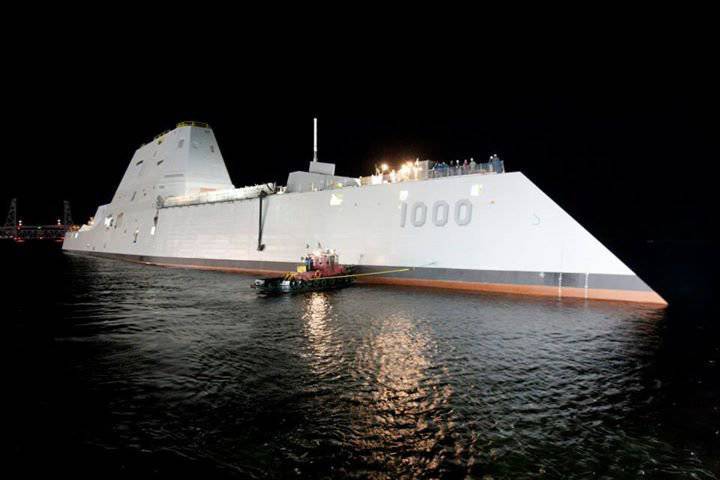
Top management of the US Navy is concerned about the extreme complexity and abnormally high cost of the destroyer. All the louder there are doubts about the combat value of this ship, which, due to the duty of its service, will have to draw closer to the enemy’s coast less than 100 miles. Nevertheless, the huge expensive ship is almost devoid of constructive protection (peripheral armored UVP - no more "shell" from the Thai boxer). Worse, Zamvolt is largely deprived of active defenses: there are no long-range anti-aircraft missiles in the ammunition, the ship does not carry any Phalanxes and RIM-116.
It is easy to guess what happens in this case with the 7 billionth Zamvolt. It’s not clear whether the 150 has enough strength for the sailors (such are the results of the destroyer's total automation) to put out fires and quickly fill the holes in the 180-meter hull.
Exceptionally high cost, dubious combat stability, small ammunition (a total of 80 UVP and 920 shells in both piles).
The Yankees themselves are asking an obvious question: maybe it was worthwhile to stop work on the obviously unpromising project of the invisible destroyer. And instead of "white elephants" to build a pair of really combat-ready ships, capable without fear of operating near the enemy coast and demolishing everything from their huge cannons.
Capital warships CSW, the most relevant to the challenges of the new millennium.
- Admiral Train's statement in connection with the start of the program to reactivate old battleships
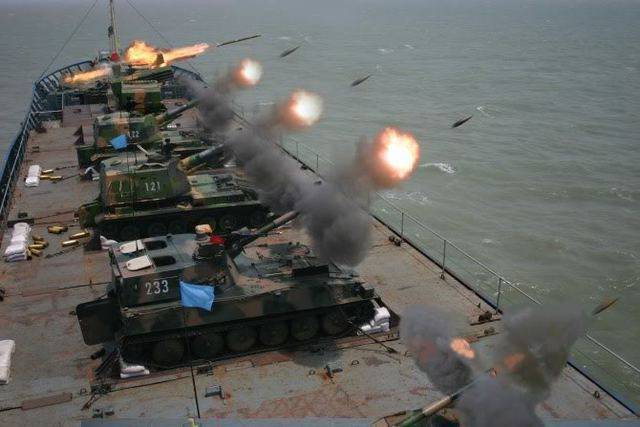
According to the materials of the report Joint and Interdependent Requirements: A Gap, 2007
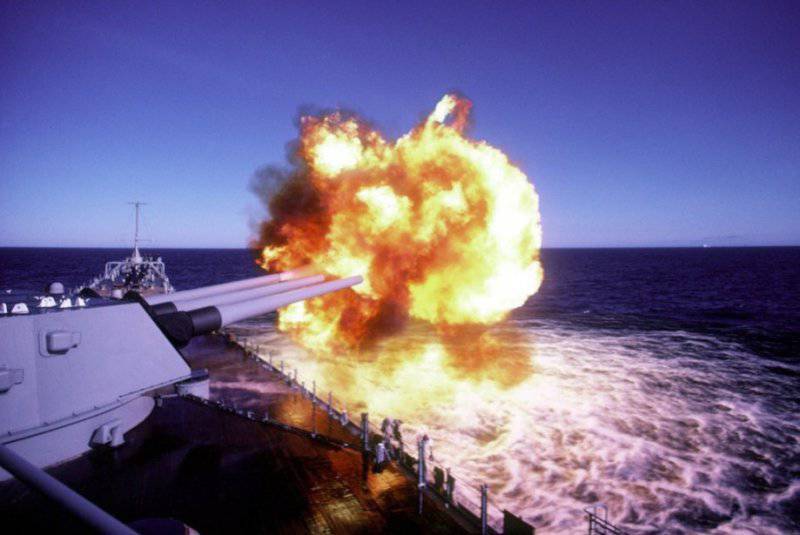
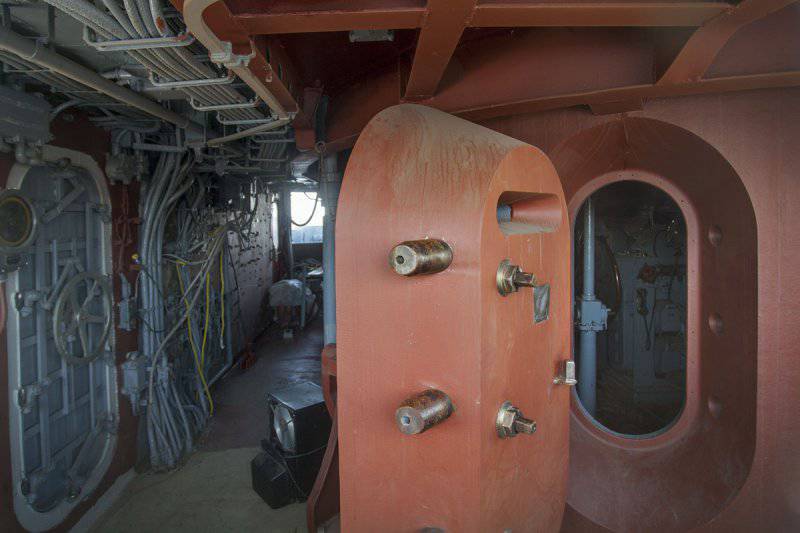
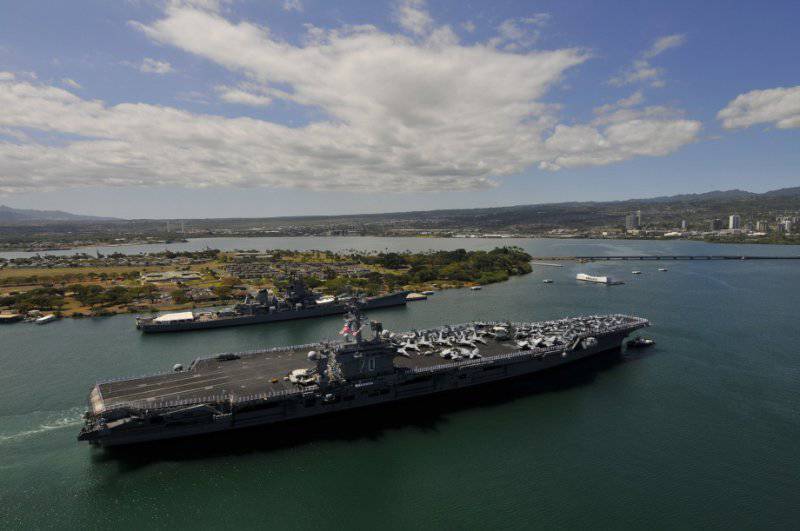
Information